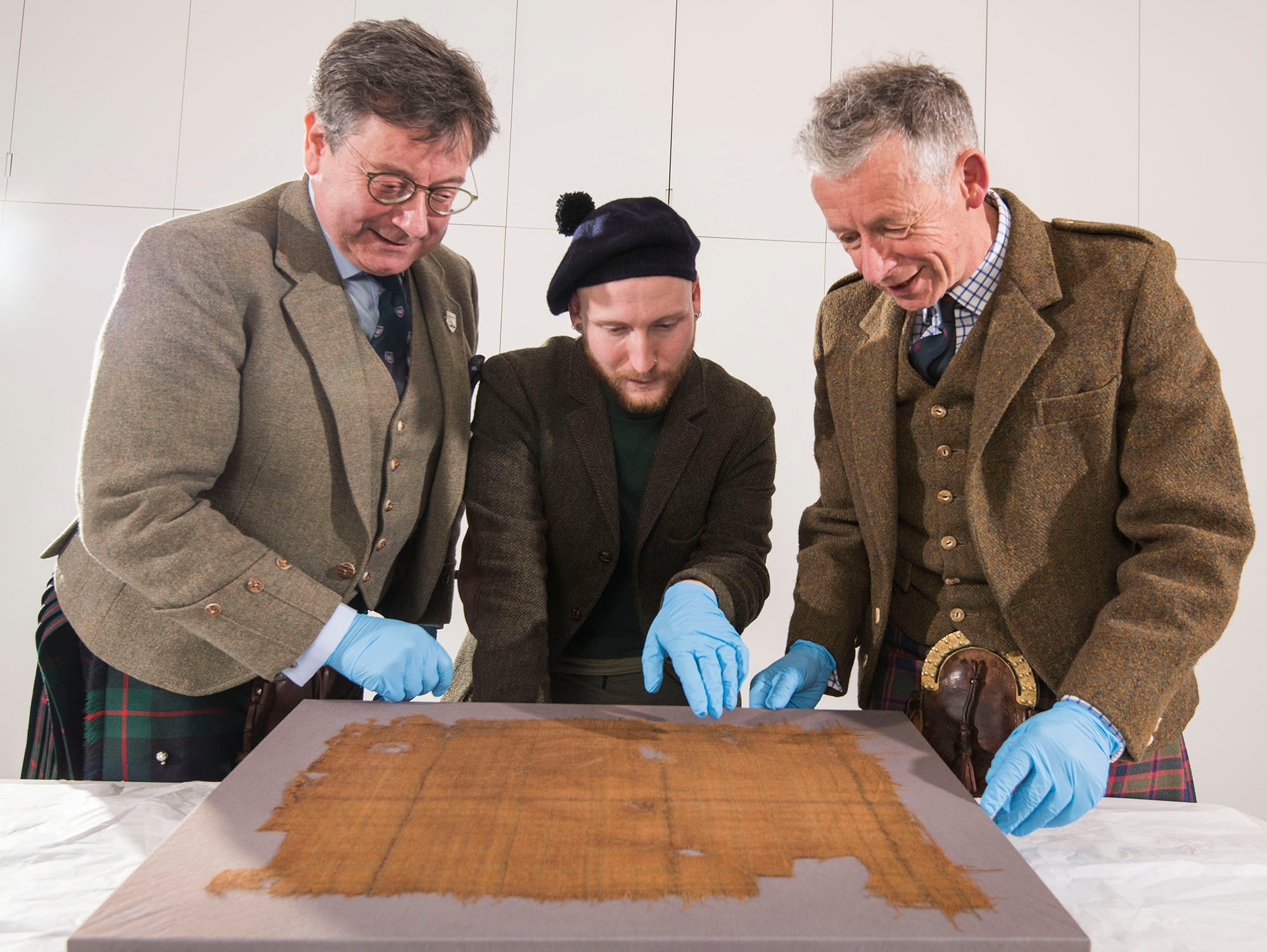
A scrap of weathered fabric, discovered four decades ago in a peat bog, is the world’s oldest piece of tartan, with new analysis determining it dates to the 16th century.
The textile was found in the 1980s in Glen Affric, a region in the Scottish Highlands about 19 miles west of Loch Ness. Measuring about 21 by 17 inches, the wool fabric is woven with multiple horizontal and vertical bands of variating colors, corresponding to what is considered a traditional tartan pattern.
The fabric recently underwent dye analysis and radiocarbon testing, in the first-ever study commissioned by the Scottish Tartans Authority to date the artifact.
The Glen Affric tartan. Photo: Alan Richardson, courtesy of V&A Dundee.
The first analysis, carried out by the National Museums of Scotland, identified four colors dyed into the wool, namely green and brown, and likely red and yellow. No artificial dyes were detected, which suggested the tartan was created before the 1750s.
Radiocarbon testing, which involved cleaning the fabric of any peat staining, narrowed that time frame to circa 1500 and 1600, making the Glen Affric artifact the earliest-known true tartan. (Another fabric fragment, known as the Falkirk tartan, dates to the third century, but its check pattern, woven with undyed yarns, is closer to that of a Celtic tweed than true tartan.)
“The testing process has taken nearly six months, but the effort was well worth it and we are thrilled with the results!” said Peter MacDonald, head of research and collections at the Scottish Tartans Authority, in a statement.
The Glen Affric tartan. Photo: Alan Richardson, courtesy of V&A Dundee.
He added that surviving examples of textiles, especially wool fabrics, are rare as they degrade swiftly in soil. The Glen Affric tartan survived only because it was buried in peat, which inadvertently preserved the fabric.
While Clan Chisholm held the region around the 16th century, when the tartan was likely made, the scientists have held back on speculating on the fabric’s provenance. “Although we can theorize about the Glen Affric tartan, it’s important that we don’t construct history around it,” MacDonald said, adding of the tartan, “we don’t know who owned it.”
The team has only determined the cloth to be part of an “outdoor working garment” considering the rustic make of the textile, which, interestingly, contrasts with the use of red dye, a color associated with high status among the Gaels.
The Glen Affric tartan. Photo: Alan Richardson, courtesy of V&A Dundee.
The Glen Affric tartan is now one of 300 objects included in V&A Dundee’s ongoing exhibition, “Tartan,” which explores the textile’s footprint across art, design, architecture, photography, and fashion. It marks the first time that the historic cloth has been on public display.
“The Glen Affric tartan is clearly a piece of national and historical significance. It is likely to date to the reign of James V, Mary Queen of Scots, or James VI/I,” said John McLeish, chair of the Scottish Tartans Authority. “There is no other known surviving piece of tartan from this period of this age.”
“Tartan” is on view at the V&A Dundee, 1 Riverside Esplanade, Dundee, through January 14, 2024.